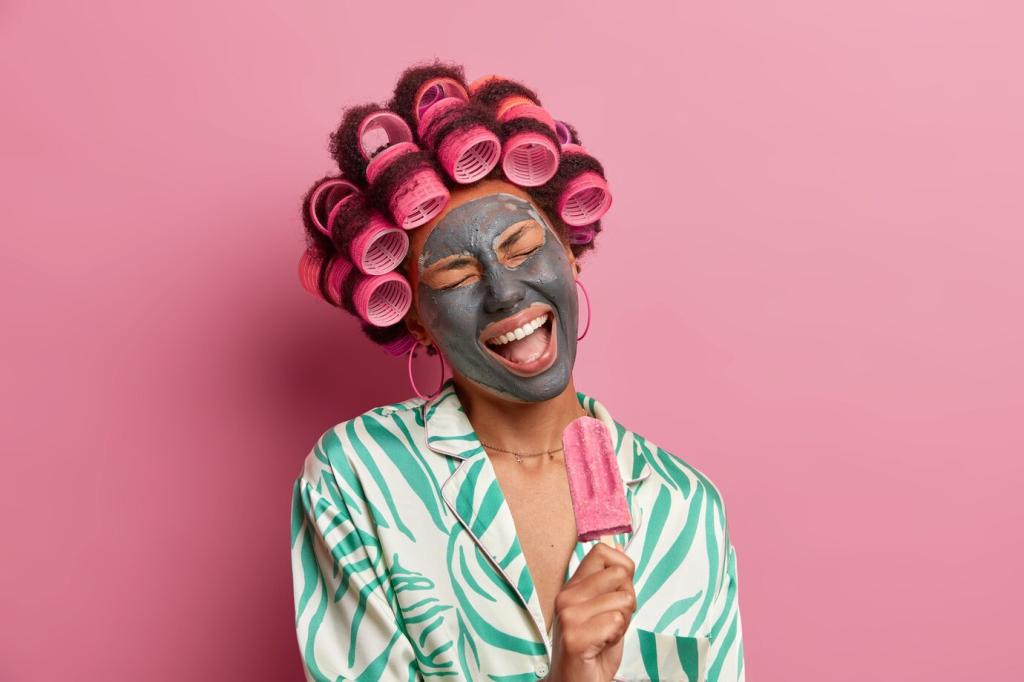Candle Dyeing Methods: Color, Craft, and Creative Confidence
Chosen theme: Candle Dyeing Methods. Step into a vivid world of wax-safe colorants, tested techniques, and story-rich tips that help you pour, dip, swirl, and layer breathtaking candles. Subscribe for hands-on guidance, real-maker anecdotes, and experiments you can replicate at home.

Foundations of Candle Dyeing
Liquid dyes deliver fast dispersion, dye chips or flakes offer repeatability, and specialized blocks balance convenience with control. Avoid unsuitable pigments that can clog wicks. Always verify that your colorant is specifically formulated for candles, ensuring clean burning, predictable saturation, and stable performance across batches.


Foundations of Candle Dyeing
Different waxes absorb and display color differently. Soy often yields softer, muted tones, while paraffin can present sharper, brighter shades. Beeswax’s natural hue subtly shifts results. Track each wax’s melt and working temperatures and add dye only when wax is fully liquefied and homogenous for smoother, consistent coloration.
Dip-Dye and Over-Dye Techniques
01
Building Saturation Through Repeated Dips
Start with a pale bath and progressively intensify color with additional dips. Rotate evenly, monitor drip lines, and let each coat set lightly before the next. This controlled repetition creates smooth gradients, avoids heavy pooling, and allows adjustment mid-process, especially helpful when testing new candle dyeing methods for tone accuracy.
02
Over-Dyeing for Complex Hues
Create nuanced colors by dipping a previously colored candle into a different dye bath. Keep records of times, temperatures, and concentration. Over-dyeing can turn a flat blue into a sophisticated teal or add a warm undertone to cool shades, offering advanced control over the final mood of your candles.
03
A Maker’s Anecdote: The First Perfect Dip
I once chased a retro coral for weeks. Only after three timed dips—each slightly warmer and deeper—did the surface turn silky and even. The breakthrough came from meticulous notes and patient pauses. Share your first victories in the comments, and subscribe for more real-world candle dyeing methods that actually work.
Ombre and Gradient Strategies
01
Begin with a lightly tinted base. After each pour, add a tiny amount of dye to your remaining wax and pour again at a consistent temperature. Gentle increments avoid abrupt bands. Label each increment so you can replicate your gradient, a hallmark of reliable candle dyeing methods and repeatable artistry.
02
Angle your mold or jar during successive pours so color pools higher on one side, producing an elegant diagonal fade. Keep pour temps steady and watch for cooling skins. The result looks complex yet relies on simple timing, patient positioning, and precise control of your chosen candle dyeing methods.
03
If you see stripes or abrupt tone shifts, lightly rewarm the surface with a heat gun to relax boundaries. Alternatively, pour a thin intermediary layer between steps. Consistent temperature and measured dye increments reduce banding, helping you achieve the cohesive ombre effect you imagined when planning your gradient design.


Marble, Swirl, and Speckle Effects
Pour your base color, let it thicken slightly, then introduce a small stream of a second color at a matching temperature. Gently stir with a skewer using minimal passes. Too much agitation blends everything. Document ratios, since even small changes dramatically shift the look of these expressive candle dyeing methods.
Marble, Swirl, and Speckle Effects
Warm a finished pillar just enough to soften the outer shell, then lightly press tiny dye flakes onto the surface. The heat sets subtle speckles without flooding color. Avoid pigments not intended for candles, especially in wicked designs, to protect burn performance and maintain reliable, safe illumination in every pour.
Natural and Botanical Colorants
Plant extracts can look beautiful but may fade, shift, or behave unpredictably under heat and light. Seek oil-soluble, candle-formulated natural dyes when possible. Always test small batches, track exposure, and compare results over weeks. Honest evaluation safeguards your brand’s reliability and refines your candle dyeing methods responsibly.
Natural and Botanical Colorants
If experimenting with botanical infusions, filter thoroughly to remove particulates that could clog wicks. Record infusion times and strengths to maintain consistency. Even better, combine gentle natural tones with tested candle dyes, creating layered effects where stability and authenticity coexist in the same thoughtfully designed, color-forward candle.


Layered Candles and Color Boundaries
Sketch the sequence, from the palest base to the most saturated cap. Stagger pours once the prior layer forms a soft skin. Align dye concentration and temperature targets with each layer’s desired intensity, ensuring boundaries remain clean while the whole design reads as one cohesive, intentional composition.

Write down wax type, temperatures, dye amounts, fragrance load, and cooling conditions. Tape in a cured color chip. Next time a customer requests the same shade, your candle dyeing methods are already mapped, saving hours and preventing waste while preserving the exact look your audience fell in love with.

Pour tiny testers at varying dye loads and line them up under natural and artificial light. Track how they cure over days. This quick discipline reveals your sweet spots and helps you spot fading, frosting, or unexpected shifts before investing in a full production run.

Post your most stubborn color challenges in the comments. What gradients defeated you? Which dips finally worked? Subscribe for weekly experiments, live Q&A sessions, and printable checklists. Your questions shape our next guides, ensuring every installment deepens your mastery of practical, beautiful candle dyeing methods.
